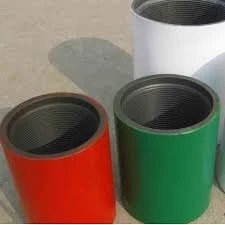- Afrikaans
- Albanian
- Amharic
- Arabic
- Armenian
- Azerbaijani
- Basque
- Belarusian
- Bengali
- Bosnian
- Bulgarian
- Catalan
- Cebuano
- Corsican
- Croatian
- Czech
- Danish
- Dutch
- English
- Esperanto
- Estonian
- Finnish
- French
- Frisian
- Galician
- Georgian
- German
- Greek
- Gujarati
- Haitian Creole
- hausa
- hawaiian
- Hebrew
- Hindi
- Miao
- Hungarian
- Icelandic
- igbo
- Indonesian
- irish
- Italian
- Japanese
- Javanese
- Kannada
- kazakh
- Khmer
- Rwandese
- Korean
- Kurdish
- Kyrgyz
- Lao
- Latin
- Latvian
- Lithuanian
- Luxembourgish
- Macedonian
- Malgashi
- Malay
- Malayalam
- Maltese
- Maori
- Marathi
- Mongolian
- Myanmar
- Nepali
- Norwegian
- Norwegian
- Occitan
- Pashto
- Persian
- Polish
- Portuguese
- Punjabi
- Romanian
- Russian
- Samoan
- Scottish Gaelic
- Serbian
- Sesotho
- Shona
- Sindhi
- Sinhala
- Slovak
- Slovenian
- Somali
- Spanish
- Sundanese
- Swahili
- Swedish
- Tagalog
- Tajik
- Tamil
- Tatar
- Telugu
- Thai
- Turkish
- Turkmen
- Ukrainian
- Urdu
- Uighur
- Uzbek
- Vietnamese
- Welsh
- Bantu
- Yiddish
- Yoruba
- Zulu
Optimal Placement of Nipple in Tubing for Enhanced Performance and Reliability
Understanding Seating Nipple in Tubing A Comprehensive Overview
In the realm of oil and gas production, the efficiency and effectiveness of various components are crucial for the smooth operation of extraction processes. Among these components, seating nipples play a significant role, particularly in tubing. This article delves into the concept of seating nipples in tubing, their functions, types, benefits, and considerations for their installation and maintenance.
What is a Seating Nipple?
A seating nipple is a mechanical device designed to facilitate the connection of downhole tools, such as plugs, valves, or other equipment, to the production tubing in oil and gas wells. The primary function of a seating nipple is to provide a stable and secure anchoring point for these tools, thereby ensuring effective sealing and pressure retention within the tubing. This is particularly important in the context of well servicing, workovers, and production optimization.
Types of Seating Nipples
Seating nipples come in various designs, each suitable for different applications and environments. The most common types include
1. Standard Seating Nipples These are the most widely used and provide a general-purpose solution for seating downhole tools. They are typically designed to accommodate standard-sized plugs and other equipment.
2. Locking Seating Nipples These nipples incorporate mechanisms that provide additional security by locking the tool in place, preventing any unintended disengagement during operation. This type is particularly useful in high-pressure and high-temperature environments.
3. Retrievable Seating Nipples Designed for easy removal, these nipples allow operators to retrieve downhole tools without the need for extensive intervention. This feature significantly reduces downtime and enhances operational efficiency.
4. Permanent Seating Nipples As the name suggests, these nipples are intended for long-term installation and are not designed to be retrieved easily. They are often used in scenarios where tools will remain in place for extended periods.
Benefits of Using Seating Nipples
The implementation of seating nipples in tubing offers numerous advantages, which include
seating nipple in tubing

- Enhanced Safety By securely anchoring downhole tools, seating nipples help mitigate risks associated with tool disengagement, which can lead to equipment failure, environmental hazards, and safety incidents.
- Operational Efficiency The use of seating nipples allows for quicker deployment and retrieval of downhole tools, minimizing the time and cost associated with well servicing and workovers
.- Improved Well Integrity With effective sealing capabilities, seating nipples contribute to maintaining well integrity, thereby preventing leaks and ensuring the consistent performance of production systems.
- Versatility Different types of seating nipples can be utilized in various scenarios, allowing operators to choose the most appropriate solution based on specific well conditions and operational requirements.
Installation and Maintenance Considerations
While seating nipples offer various benefits, proper installation and maintenance are critical to their effective performance
1. Installation When installing a seating nipple, it is essential to follow industry best practices and manufacturer guidelines. Proper alignment and torque specifications must be adhered to in order to ensure a reliable seal and prevent potential failures.
2. Inspection Regular inspection of seating nipples is necessary to identify wear, corrosion, or other damage that may compromise their functionality. Operators should conduct routine checks, particularly after significant pressure changes or before any workover operations.
3. Compatibility It is vital to ensure that the seating nipple selected is compatible with the downhole tools used and that it meets the specific pressure and temperature requirements of the operation.
4. Training Personnel involved in the installation and maintenance of seating nipples should receive adequate training to ensure safety and compliance with operational standards.
Conclusion
Seating nipples are a critical component in the oil and gas industry, providing essential support for downhole equipment in production tubing. Their various designs cater to specific operational needs, enhancing safety, efficiency, and well integrity. However, the benefits of seating nipples can only be fully realized through careful installation, regular maintenance, and adherence to industry best practices. As the industry continues to evolve, advancements in the design and technology of seating nipples will likely enhance their functionality and contribute to more efficient resource extraction. Understanding and effectively utilizing these components is vital for optimizing production processes and ensuring the safety and reliability of oil and gas operations.
-
Well Casing Extension Couplings – Applications and InstallationNewsJun.06,2025
-
Types of Crossover Subs in Drilling & CompletionNewsJun.06,2025
-
Key Features of High-Quality Tubing Pup JointsNewsJun.06,2025
-
Installation and Maintenance Tips for Steel Couplings for PipeNewsJun.06,2025
-
How to Select the Right Pup Joint for Oil & Gas OperationsNewsJun.06,2025
-
Applications of Stainless Steel Pipe CouplingsNewsJun.06,2025







